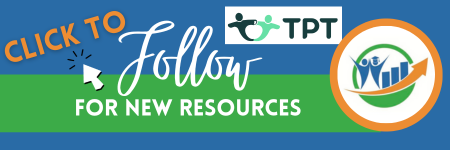Building Bridges: 3 Ways District Leaders Shape a Positive Culture
- Dr. Wendy Wells
- Jun 9
- 3 min read
Updated: Sep 16
By Dr. Wendy Wells

Working in district administration can often feel like a behind-the-scenes role, far removed from the daily rewards of seeing students learn and grow. Unlike teachers or school-based staff who experience the immediate impact of their efforts, district leaders work at a broader level, shaping systems and policies that influence entire schools. Yet, this sometimes indirect work is critical, as district leadership sets the tone for the entire educational system. A strong, positive culture at the district level ensures that schools are supported, educators feel valued, and students have the resources they need to succeed.
By fostering this culture, district leaders create a ripple effect that empowers principals, teachers, and students, making a profound impact—even if the rewards aren’t always immediately visible.

Here are 3 impactful actions district leaders can use to strengthen and improve that culture for lasting change.
Build a Culture of Trust and Collaboration Across All Levels
Foster an environment where schools and district offices work together toward shared goals. Open communication and collaboration create a sense of connection, ensuring district employees feel valued and integral to the success of the entire system. Some possible strategies include:
Ensuring Clear and Shared Objectives: Develop and communicate clear, district-wide goals that all schools and departments can rally behind. Involve teachers, principals, and staff in the goal-setting process to ensure that everyone feels ownership and accountability toward achieving these objectives.
Encouraging Cross-Departmental Initiatives: Promote joint projects or initiatives that require input and cooperation from multiple departments or schools. This helps break down silos and build relationships across the district.
Creating a Collaborative Feedback Loop: Implement a structured system for collecting feedback from schools to district leaders and vice versa. This could include surveys, focus groups, empathy interviews, or collaborative workshops that ensure everyone’s voice is heard and used to refine strategies.
Empower Educators and District Staff with Flexibility and Resources
Provide both educators and district teams with tools and opportunities to adapt and innovate. Reframing district-mandated initiatives as supportive resources, rather than strict mandates not only benefits schools but also creates a more empowering and fulfilling environment for district employees who design and implement these tools. Some possible strategies include:
Offering Flexible Professional Development with a UDL Approach: Train educators to use Universal Design for Learning (UDL) principles to design curriculum-based lessons that are inclusive, ensuring that every student can engage with high-quality, grade level content in ways that work best for them.
Creating Collaborative Innovation Teams with a Focus on Subgroups: Form cross-functional teams that include district leaders, special education teachers, ESL specialists, high-ability teachers, and general educators to co-create solutions that meet the needs of exceptional learners and other subgroups.

3. Support and Recognize Leadership at Every Level
Invest in the professional development of both school leaders and district staff, recognizing their critical roles in fostering success. Celebrating achievements and providing growth opportunities helps district employees feel motivated, engaged, and proud of their contributions to a thriving educational culture. Some possible strategies include:
Encouraging Collaborative Learning Communities: Facilitate the creation of communities of practice or collaborative learning groups where educators, school leaders, and district staff can meet regularly to share ideas, discuss challenges, and co-create solutions. This approach encourages continuous improvement and helps build a culture of mutual support and innovation.
Providing Recognition Beyond Performance: Recognize the efforts and contributions of school leaders and district staff in ways that go beyond their job performance. Acknowledge their dedication, collaboration, and commitment to the district’s values and mission. This can include informal shout-outs during meetings, thank-you notes, or highlighting their contributions in district communications.
By fostering a positive culture built on trust, empowerment, and recognition, district leaders ensure schools are supported and educators feel valued. The 3 impactful actions outlined—promoting collaboration, providing flexibility, and investing in leadership—create lasting change that benefits everyone within the system. Though the rewards may not always be visible right away, the ripple effect strengthens the foundation of education for all.
Learning Forward - A professional association that focuses on teacher and leader development. They provide research, professional development opportunities, and frameworks for fostering effective leadership and collaborative learning communities.
CAST.org - A nonprofit organization that works to make learning more inclusive. They provide free tools, templates, and articles on incorporating UDL into teaching and leadership strategies.
Want to learn more about ways to promote positive culture in your district?
Find out how INcompassing Education can support your district.



